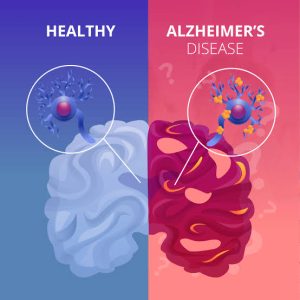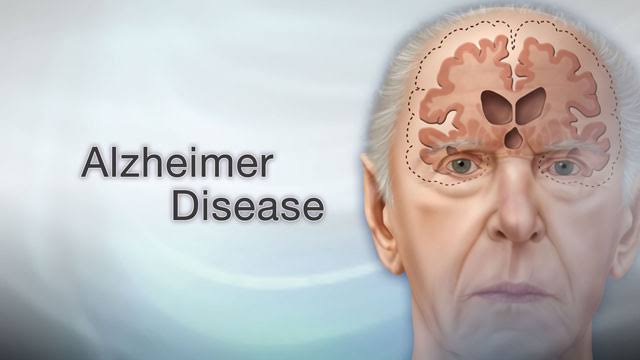As Dr. Emma Taylor gazed into the eyes of her latest patient, she saw a glimmer of the vibrant soul trapped behind the fog of Alzheimer’s. The Mind Odyssey had begun, a journey through the labyrinthine corridors of the mind, where memories hid like fugitives and thoughts tangled like ivy. Emma was determined to unravel the mystery, to unlock the doors of perception and guide her patient back to the surface of reality.
But as they delved deeper, the shadows deepened, and the silence grew thicker. Emma’s team raced against time to crack the code, to find the hidden pattern that would restore her patient’s memories and reignite the spark of life. And then, like a ray of sunlight piercing the clouds, a breakthrough! A glimmer of hope that illuminated the dark expanse, a hint that the Mind Odyssey was not a journey into the abyss, but a voyage of discovery, a testament to the indomitable human spirit.
As the fog began to lift, Emma’s patient began to remember – fragments at first, then snippets, and finally, glorious moments of clarity. The Mind Odyssey had become a journey of redemption, a celebration of the human mind’s capacity to heal, to overcome, and to soar. Emma’s team cheered, tears streaming down their faces, as their patient rediscovered the joy of life, the sweetness of love, and the beauty of a sunset. The Mind Odyssey had become a beacon of hope, inspiring countless others to embark on their own journey, to confront the shadows, and to emerge victorious, their minds ablaze with the fire of hope and their hearts overflowing with the sweetness of life.
What is Alzheimer’s Disease?

Alzheimer’s disease is a progressive neurological disorder that affects memory, thinking, and behavior. It is the most common form of dementia, accounting for 60-80% of dementia cases.
Alzheimer’s disease is characterized by:
– Beta-amyloid plaques: Deposits of a protein that accumulate in the brain, disrupting normal brain function.
– Tau tangles: Twisted fibers of another protein that damage brain cells.
– Neuroinflammation: Activation of immune cells, leading to inflammation and damage to brain tissue.
– Neurodegeneration: Death of brain cells, especially in regions important for memory and learning.
Pathophysiology
1. Amyloid Cascade:
– Beta-amyloid (Aβ) peptides accumulate in the brain, forming insoluble fibrils that deposit in brain tissue.
– Aβ disrupts normal brain function, leading to neurodegeneration.
2. Tau Pathology:
– Tau protein abnormally phosphorylates, forming neurofibrillary tangles (NFTs) that damage brain cells.
3. Neuroinflammation:
– Activation of immune cells and release of pro-inflammatory cytokines, exacerbating neurodegeneration.
4. Oxidative Stress:
– Imbalance between free radical production and antioxidant defenses, leading to cellular damage.
5. Mitochondrial Dysfunction:
– Impaired energy production and increased oxidative stress in brain cells.
6. Synaptic Loss:
– Disruption of synaptic connections between neurons, leading to cognitive decline.
7. Neurodegeneration:
– Death of brain cells, especially in the hippocampus and temporal lobe, leading to cognitive and functional decline.
Types
– Early-onset Alzheimer’s: This type affects younger people, usually in their 40s and 50s, and is linked to a defect on chromosome 14.
– Late-onset Alzheimer’s: This is the most common form of the disease and affects people 65 and older. The exact cause of late-onset Alzheimer’s remains unknown.
– Familial Alzheimer’s disease (FAD): This is a form of the disease that is caused by genetics and affects multiple family members across generations, making up less than 1% of all Alzheimer’s cases.
Causes
1. Age
2. Family history
3. Genetics (APOE, Presenilin, APP)
4. Amyloid plaques
5. Tau tangles
6. Neuroinflammation
7. Oxidative stress
8. Mitochondrial dysfunction
9. Cardiovascular disease
10. High blood pressure
11. High cholesterol
12. Diabetes
13. Obesity
14. Smoking
15. Physical inactivity
16. Poor diet
17. Vitamin D deficiency
18. Hearing loss
19. Depression
20. Traumatic brain injury
Signs and Symptoms
– Memory loss that disrupts daily life
– Forgetting recently learned information
– Forgetting important dates or events
– Asking the same questions over and over
– Needing to rely on memory aids or family members for things they used to handle on their own
– Trouble following a familiar recipe
– Trouble keeping track of monthly bills
– Trouble concentrating and taking much longer to do things than they did before
– Having trouble driving to a familiar location
– Trouble organizing a grocery list
– Trouble remembering the rules of a favorite game
– Losing track of dates, seasons, and the passage of time
– Trouble understanding something if it’s not happening immediately
– Forgetting where they are or how they got there
– Vision changes
– Trouble with balance
– Trouble reading
– Trouble judging distance and determining color or contrast
– Trouble following or joining a conversation
– Struggling with vocabulary
– Trouble naming a familiar object
– Putting things in unusual places
– Losing things and being unable to go back over their steps to find them
– Accusing others of stealing
– Changes in judgment or decision-making
– Poor judgment when dealing with money
– Paying less attention to grooming or keeping themselves clean
– Withdrawing from hobbies, social activities, or other engagements
– Trouble keeping up with a favorite team or activity
– Mood and personality changes
– Confusion
– Suspicion
– Depression
– Fear
– Anxiety
– Withdrawal from social activities
– Inability to learn new things
– Difficulty with language
– Trouble with reading, writing, and working with numbers
– Difficulty organizing thoughts and thinking logically
– Shortened attention span
– Problems coping with new situations
– Changes in sleeping patterns
– Trouble carrying out familiar, multistep tasks
– Difficulty recognizing family and friends
– Hallucinations
– Delusions
– Paranoia
– Impulsive behavior
– Inappropriate emotional outbursts
– Restlessness
– Agitation
– Anxiety
– Tearfulness
– Wandering
– Repetitive statements or movement
– Muscle twitches
– Inability to communicate
– No awareness of recent experiences or surroundings
– Weight loss with little interest in eating
– Seizures
– General physical decline
– Dental problems
– Skin problems
– Foot problems
– Difficulty swallowing
– Groaning, moaning, or grunting
– Increased sleeping
– Loss of bowel and bladder control
Prevention
1. Exercise regularly: Physical activity improves cardiovascular health and promotes brain health.
2. Social engagement: Stay connected with friends, family, and community to build cognitive reserve.
3. Cognitive stimulation: Engage in mentally challenging activities, such as reading, puzzles, and learning new skills.
4. Healthy diet: Focus on whole, unprocessed foods, like the Mediterranean diet.
5. Manage stress: Chronic stress can harm brain health; practice stress-reducing techniques like meditation or yoga.
6. Sleep well: Aim for 7-9 hours of sleep per night to help clear brain waste.
7. Monitor and manage health conditions: Diabetes, hypertension, and cardiovascular disease increase Alzheimer’s risk.
8. Don’t smoke: Smoking is linked to increased Alzheimer’s risk.
9. Limit alcohol consumption: Excessive alcohol consumption can harm brain health.
10. Protect your head: Traumatic brain injury increases Alzheimer’s risk; wear protective gear and drive safely.
11. Stay hydrated: Dehydration can harm cognitive function.
12. Get enough vitamin D: Low vitamin D levels are linked to increased Alzheimer’s risk.
13. Omega-3 fatty acids: Consume foods rich in omega-3s, like salmon and walnuts, to support brain health.
14. Antioxidants: Consume foods high in antioxidants, like berries and leafy greens, to reduce oxidative stress.
15. Stay engaged and purposeful: Maintain a sense of purpose and engagement in activities you enjoy.
Management Of Alzheimer’s Disease
1. Medications: As mentioned earlier, cholinesterase inhibitors, memantine, and immunotherapy may be prescribed to manage symptoms.
2. Non-pharmacological interventions:
– Cognitive training and rehabilitation
– Behavioral therapy (e.g., cognitive-behavioral therapy)
– Caregiver support and education
– Environmental modifications (e.g., simplifying the living space)
– Alternative therapies (e.g., music, art, or animal-assisted therapy)
3. Lifestyle modifications:
– Regular exercise and physical activity
– Social engagement and activities
– Cognitive stimulation (e.g., reading, puzzles)
– Healthy diet and nutrition
– Stress management
4. Caregiver support:
– Education on Alzheimer’s disease and its management
– Emotional support and counseling
– Respite care and temporary relief
– Support groups
5. Advanced care planning:
– Legal and financial planning
– End-of-life care discussions
– Advance directives (e.g., living will, power of attorney)
6. Continuous monitoring and assessment:
– Regular health check-ups
– Cognitive and functional assessments
– Monitoring for complications and co-morbidities
Prognosis
– On average, people with AD over 65 die within four to eight years of the diagnosis
– Some people may live up to 20 years after the first symptoms appear
– Common causes of death include:
– Infections
– Falls
– Eating problems
– Heart disease
– Stroke
– Alzheimer’s disease is the seventh leading cause of death in the United States
– Caring for someone with Alzheimer’s can have significant physical, emotional and financial costs.

